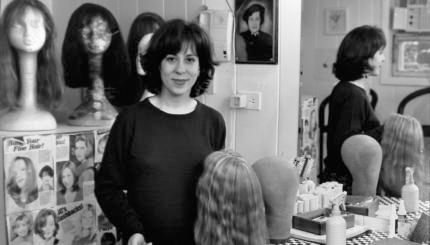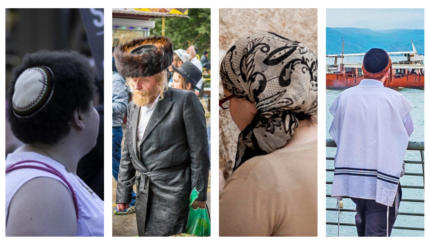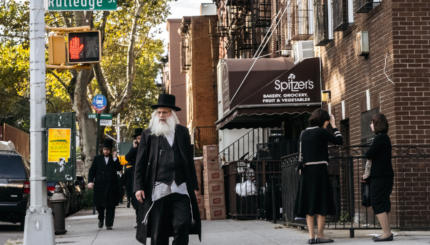When I set out to study in a traditional religious academy in Jerusalem last year, I was expecting a spiritual change, not a fashion makeover. I got both.
Much of my professional life I worked in Los Angeles’s entertainment industry where fashion was essential to my self-identification. In the entertainment business, your awareness of trends and styles are a reflection of your understanding of the marketplace, demonstrating how well you understand what is cool and what isn’t cool, what’s current and what’s outdated.
Building on this fashion understanding, I created the Skinny jeanz & Jerkin Movements. Jerkin/Skinny jeanz Movements were inspired by Black and Hispanic teenagers across America’s inner cities using fashion and social media to get away from local gang culture. Inspired by the courage of these teenagers, I partnered with Warner Brothers to executive produce music, film, television all based on what l called Jerkin/Skinny jeanz Movements. Some of the most popular music stars to come out of the culture were the “New boyz” & “YG“. The biggest show I created/executive produced was “Jerk All-Stars” in 2010 with Sprite & MySpace. Because of my notoriety in the press, Vogue magazine hired me as its street fashion correspondent, where I worked underneath fashion icon Hedi Slimane; who influenced my personal style immensely.
But then my journey took a Jewish turn. Today, I live in a neighborhood called Mea She’arim (in Jerusalem). It is a religious neighborhood where most men wear white shirts, black sports coats, black pants and a black hat. It’s a style of dress that reflects the commitment of an individual to Torah learning within a Torah community.
When I first moved into the Mea She’arim community, I didn’t see it that way. I saw black-and-white dressing style, as a lack of creativity, a lack of self-expression; something I would never participate in.
However, as, I began to delve deep into the study of ancient texts of Gemara and the Mishnah I began to see things differently.
My teacher Rav Zweig explains that the Mishnah, one of the most important Jewish texts, was originally an oral tradition. But because of challenges faced by the ancient Jewish community, there was a fear the oral tradition would be lost. To not completely lose the brilliance of the oral tradition, the Mishnah was written with few words, forcing the reader to invoke his unique intelligence to understand what is being said in the Mishnah/Gemara.
The traditional method of learning Mishnah/Gemara in yeshiva is with a chavrusa (also known as a havruta) which in English means “friendship” or “companionship”. Two students sit together as a pair and disgust, analyze, debate the text. According to Rav Zweig, the genius of having a chavrusa is that through debate and listening to each other, both individuals become more aware of what makes them unique in the world; which is their intelligence.
As Rav Zweig explains God made everyone unique, everyone has a genius way of seeing the world. Learning Gemara with a chavrusa allows a person to strengthen, appreciate and understand their unique intelligence with a partner though the challenges of the text.
I was raised in a secular education system that took the approach that one size fits all. I was exposed to never asked me what my thoughts were. Only graded me on my ability to regurgitate other people’s ideas. The education system, I grew up in was devoid of ever asking me what made me unique, what my thoughts were or showing me how to appreciate them. Growing up, I used style and clothing to highlight being ahead of my peers in terms of preferences and language.
Learning Torah at Ohr Somayach Yeshiva in Jerusalem over the last year has taught me a different way to think about education, to appreciate my thoughts and how to strengthen my ability to think independently as a person and a Jew.
Fashion is such a big part of my life. I love clothes. I love dressing up for fancy events. At the same time, the clothes I put on aren’t indicative of what makes me unique. Most of what I would consider cool fashion is a byproduct of ideas given to me by television, magazines and what I see other people wearing.
As a Jew, style and trends do not make me unique. What makes me unique is how I express Torah in my everyday life; how I treat myself and how I treat other people. Today, I see that my acts of kindness and unconditional love expressions of what makes me unique.
Recently, I’ve adopted the traditional dress of yeshivah bochers, those who study in religious academies, all over the world: black hat, with black jacket/pants with a white shirt. For me, this fashion statement expresses my commitment to expressing God’s Torah in my everyday life and a rejection of the secular system that tells me that to follow pop culture trends and styles as a means of expressing my uniqueness.
In my opinion, the greatest thing a person can do with their life is to find out what makes them unique and share it with the world!
The author, right, studying with Rav Zweig in Jerusalem.




